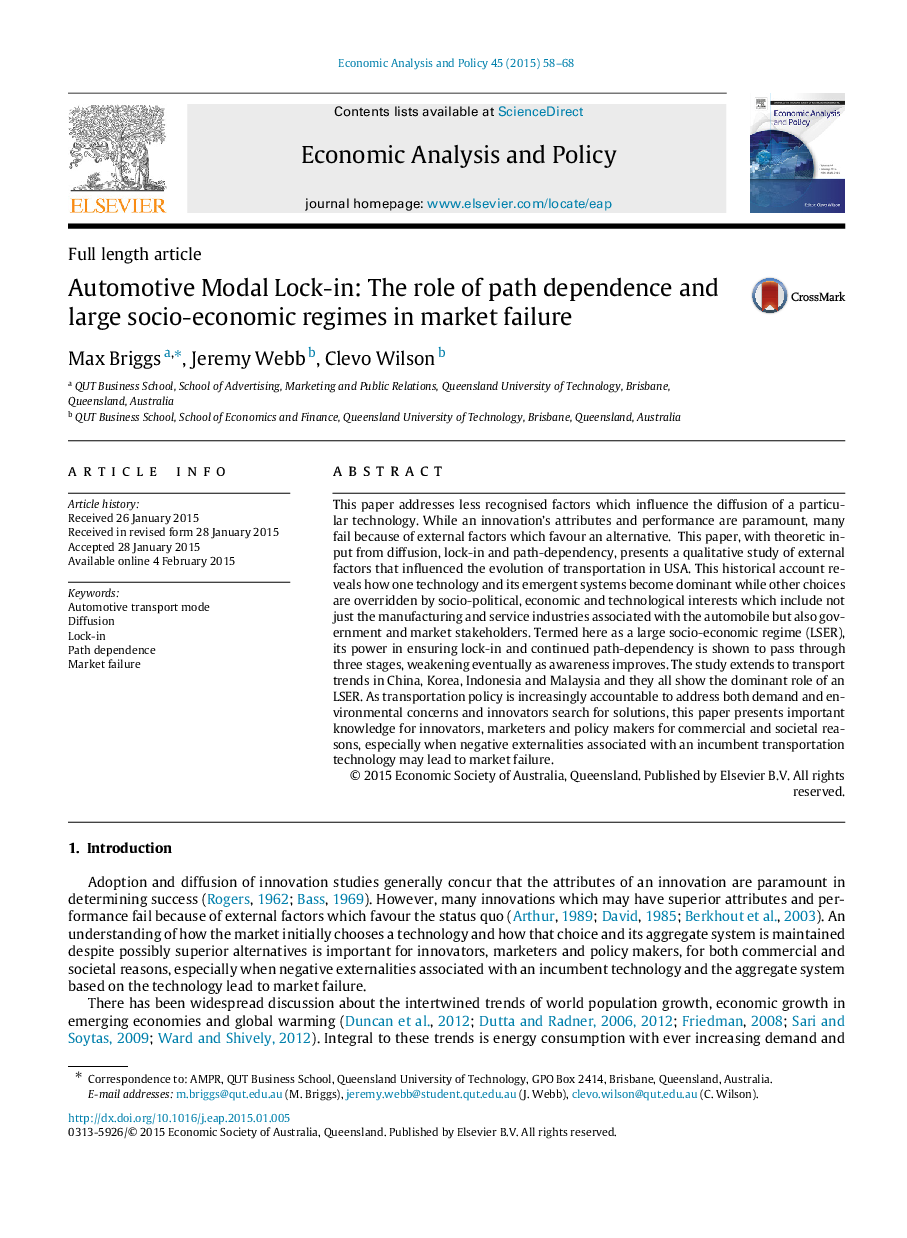| Article ID | Journal | Published Year | Pages | File Type |
|---|---|---|---|---|
| 5052778 | Economic Analysis and Policy | 2015 | 11 Pages |
Abstract
This paper addresses less recognised factors which influence the diffusion of a particular technology. While an innovation's attributes and performance are paramount, many fail because of external factors which favour an alternative. This paper, with theoretic input from diffusion, lock-in and path-dependency, presents a qualitative study of external factors that influenced the evolution of transportation in USA. This historical account reveals how one technology and its emergent systems become dominant while other choices are overridden by socio-political, economic and technological interests which include not just the manufacturing and service industries associated with the automobile but also government and market stakeholders. Termed here as a large socio-economic regime (LSER), its power in ensuring lock-in and continued path-dependency is shown to pass through three stages, weakening eventually as awareness improves. The study extends to transport trends in China, Korea, Indonesia and Malaysia and they all show the dominant role of an LSER. As transportation policy is increasingly accountable to address both demand and environmental concerns and innovators search for solutions, this paper presents important knowledge for innovators, marketers and policy makers for commercial and societal reasons, especially when negative externalities associated with an incumbent transportation technology may lead to market failure.
Related Topics
Social Sciences and Humanities
Economics, Econometrics and Finance
Economics and Econometrics
Authors
Max Briggs, Jeremy Webb, Clevo Wilson,
